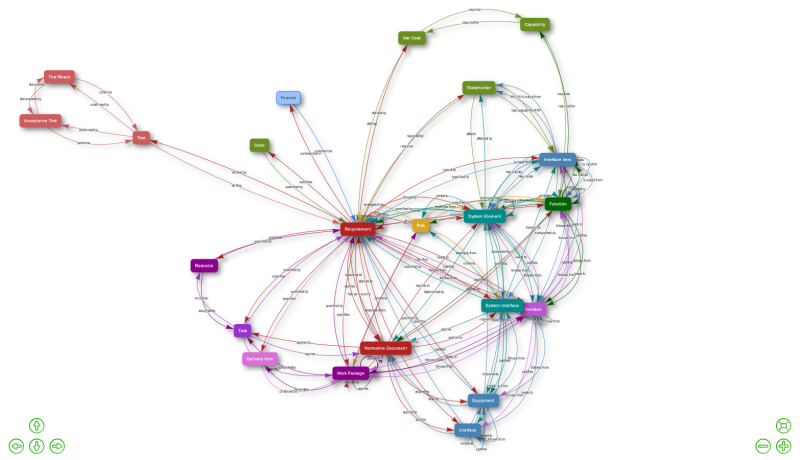Meta Model
<image shape=“thumbnail”> </image>
</image>
During the development of a process, a large amount of information typically accumulates, which on the one hand describes the performance values of the system or documents a step in the development of the system.
In RePoSyD, the information is stored as Design Data, whereby a distinction is made between Design Data Objects and Design Data Links.
Design Data Object (DDO)
A Design Data Object represents a development artifact, such as a function or requirement whose data is summarized in the form of design data attributes. The purpose context of the attributes is defined by an Project Unique Identifier (PUID) that is associated with each object.
It consists of the actual data, which is represented in the form of attributes and administrative information, such as the creation or modification date and the design data object type. The PUID defines the context of the attributes and thus the information contained in the data.
Without the context, the intended use of the data can neither be determined nor its plausibility can be checked. For example, the following attributes 'description', 'justification', 'source' can contain any data imaginable, but it is by determining the context, in this case as a requirement, that the meaning of the attributes and their interrelationship becomes clear.
For details about Design Data Objects and Attributes see Design Data Object (DDO)
Design Data Link (DDL)
With the Design Data Links, Design Data Objects are networked with each other, e.g. dependencies, assignments, or refinements.
Design data links are more than just links between design data objects. In RePoSyD, all links are directed, i.e. the start and end points are defined , they are typed (semantics) and have their own attributes, e.g. status information.
Design Data Hierarchy (DDH)
A Design Data Hierarchy (DDH) represents hierarchical dependecies between Design Data Objects. A DDH consists of a downlink (parant child relationskih) and an uplink (child parent relationship).
For details about Design Data Hierarchies see Design Data Hierarchy (DDH)